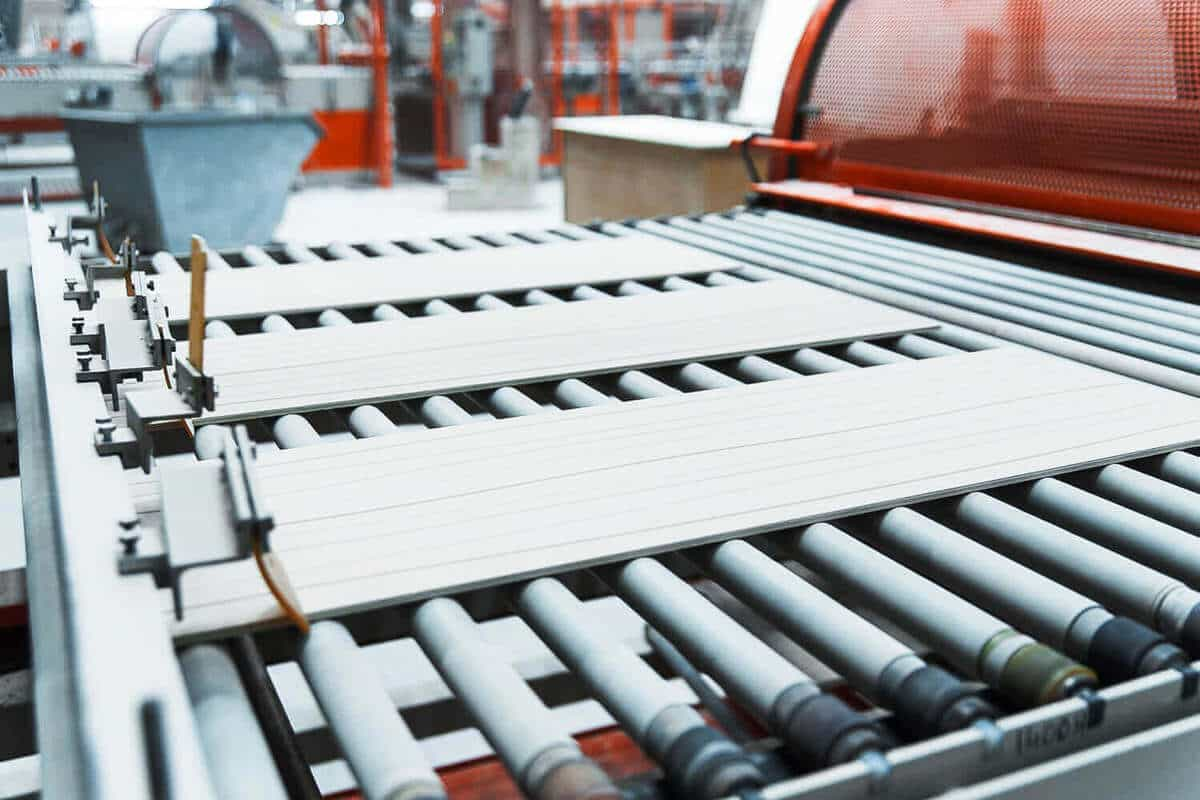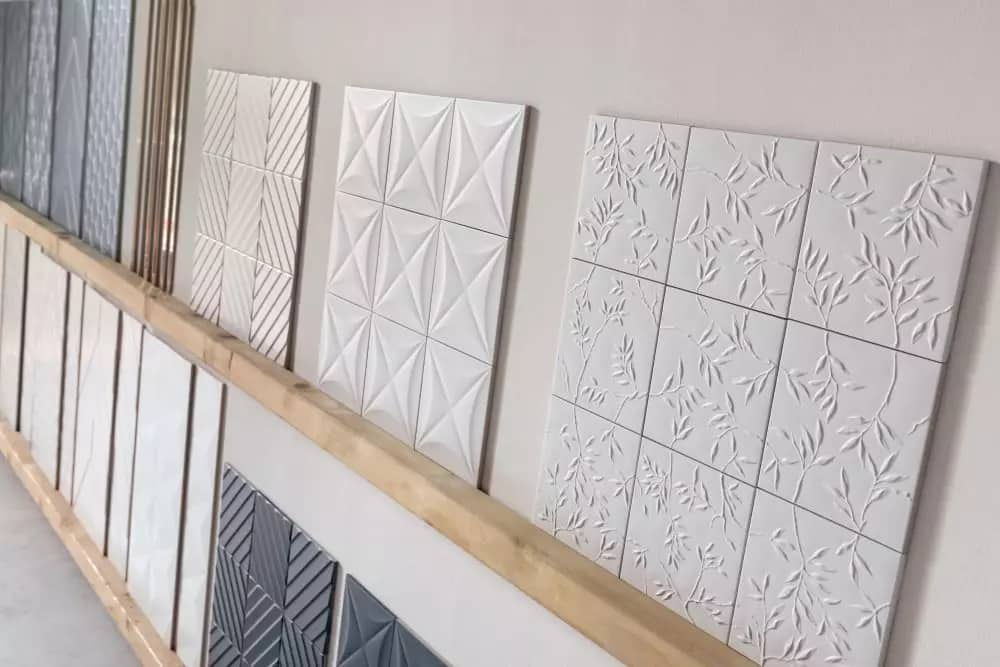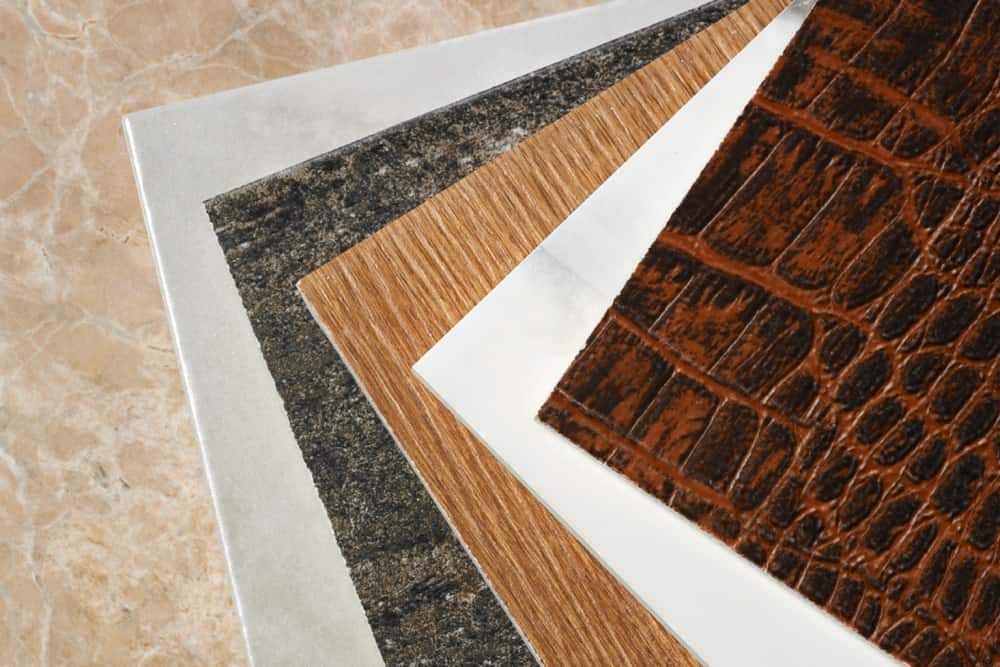Frequently, ceramic raw material is categorized according to their roles in the manufacture of ceramics as well as their fundamental properties. Typically, water, sand, and clay are combined to produce tiles for use on the wall, floor, and stair. Further separation of details is determined by the substance’s composition.
- Clay
Clay is frequently the most important component of a ceramic tile’s body. Clay refers to natural mineral aggregates composed primarily of the hydrous alumina silicate. The mineral makeup and degree of purity of the clay vary considerably.
Clay serves as an inexpensive source of alumina and silica, a binder, and a suspension aid, among other functions. From a geologist’s perspective, kaolin is produced from feldspar and on feldspar crystals in the presence of weathering or acidic water.

All exposed rock masses are eroded through the process of weathering in order to bring the land’s elevation to sea level. Either a mechanical or a physical process is occurring. Over time, water in the form of rain or waves erodes the surface of rocks through a mechanical process.
Additionally, high-velocity wind has the potential to cause damage. Clay is formed through a chemical process that is aided by the mechanical breakdown and separation of fine and coarse particles. Clays are the result of the alteration, aging, and weathering of rocks such as quartz, mica, feldspar, and granite. When discovered, they are referred to as residual or main clays.
The clays were formed in the location of the parent rock and were not displaced by any of the numerous factors, including wind and water.
Primitive clays, such as china clay, are often found in isolated locations that still include unaltered bedrock. Due to the lack of aqueous conveyance of the clay, these deposits are inflexible and coarse-grained.
As a result, the various particle sizes were not separated selectively. Because the majority of basic clays were produced from pure feldspar, they are often devoid of non-clay minerals. Kaolins are mostly clays. As a result of its great purity, china clay burns white. Therefore, it may be utilized to create porcelain and china. Its low impurity level also adds to its high refractive index.

Sedimentary or secondary clays are clays that have been transported from their original formation site by wind or water. The action of water causes the clay to disintegrate into much smaller particles.
Sedimentary clays, such as ball clays, depend on their minute particle sizes to remain suspended throughout transit. After this sedimentation process separates coarse particles from tiny particles, only the latter will be delivered to the ultimate deposit.
The sedimentary clays are likely contaminated with impurities or accessory minerals such as muscovite, biotite, quartz, iron oxide, rutile, and garnet that have accumulated along the path. Typically, transported clays contain clays from numerous origins. Most likely, carbonaceous elements and sediments from many places are combined together.
Secondary clays are hence malleable and fine-grained. Additionally, secondary clays include aeolin, wind-deposited, and glacial clays. Compared to china clay, which is normally white, the burnt hue is frequently more buff.
There may have been organic and other impurities present when they were redeposited in low-lying marshy zones, causing the darker charred appearance.
The ball clays, which are mostly composed of kaolinite, are substantially finer than china clay and include minuscule quantities of contaminants. Clay-forming minerals are derived from aluminous rocks, particularly those containing feldspar. Specifically, orthoclase, KAlSi3O8, and albite, NaAlAlO8, it is believed that the ore represents a kaolin formation.
Feldspars frequently crystallize with other minerals during magma solidification. The following chemical reaction illustrates the kaolinization of feldspar:

- Quartz, potassium carbonate, and feldspar are the constituents of kaolinite.
- CO2 + 2H2O + KAlSi3O8 ———> 4 SiO2, Al2Si2O5(OH), and K2CO3
All ceramic bodies are composed mostly of clay. The functions of the clays in ceramic tile are as follows:
After burning, imparts mass plasticity and binding qualities that enhance the mechanical properties of fired tiles. During firing, it generates high rheological flow properties and a good density level due to the unique properties of the clays.
- Feldspar
Feldspar is one of the three essential raw materials for the triaxial body, as well as an essential and frequently employed fluxing agent for ceramic bodies and glazes.
Feldspar provides the glassy phase for ceramic bodies, and it is added to the mixture in order to reduce the firing temperature and, consequently, the cost.
Feldspars are often found in pegmatite rocks of the granite type, which may be thought of as a mixture of feldspar minerals together with quartz and mica. Following the removal of the overburden by bulldozers or backhoes, drilling and blasting are performed at the feldspar mine using the conventional open-pit mining method.
After crushing the material with a jaw or cone crusher, it is screened through various apertures, such as 5 mm or according to market requirements. Using magnetic separators, contaminants are also eliminated (for eg. iron).
There are three types of feldspar minerals: Na-Feldspar, also known as albite, K-Feldspar, also known as orthoclase, and Ca-Feldspar, also known as anorthite. Feldspar is not pure in nature, but rather contains an intermediate composition. Orthoclase and anorthite are thus found in sodium feldspar.
Additional auxiliary minerals include quartz, iron complex, and magnesia. Feldspars are essential for achieving the vitreous nature of the body and the high mechanical resistance of the final product in the ceramic tile body, especially porcelain tile.
Feldspars, like other non-plastic substances, function as a flux, but they also facilitate drying and gas release during combustion.

- Silica
Silica is the most abundant oxide in the planet’s crust. Although the majority of silica is associated with other elements in silicate minerals, a significant amount occurs as free silica, typically in the form of quartz.
There are three forms of silica in nature: rock, granular, and powder.
- A) This type of stone is also known as quartz stone. Due to its impurity level, this type of silica is not widely used in the ceramics industry.
- B) The most common form of silica is granular, which is also known as silica sand. Even without beneficiation, this kind of silica is often used in ceramics because it is relatively pure.
- C) Powder Type – Also known as diatomaceous earth, this amorphous silica type has a high level of impurities. Instead of ceramics, thermal insulation is the primary use.
There are several varieties of silica. Quartz, tridymite, and cristobalite are the three most common kinds of crystal.
Quartz is far less costly than the other raw materials used to create ceramic bodies. The body obtains silica from flint or silica sand. Before fire, silica sand diminishes the material’s strength and flexibility, but after drying and firing, it assists in gas escape. In addition, it reduces drying shrinkage and increases the brightness of the burned body.
In addition to the basic clay, feldspar, and silica sand, other components include a variety of minerals used to vary the qualities of the bodies themselves. The most significant material in this category is the talc used to increase fusibility.
Utilizing additional minerals such as wullastonite, dolomite, magnesite, and nepheline syenite aids in the vitrification of the body.
- Talc
Talc, which has the chemical formula 3MgO.4SiO2.H2O, is used in minute amounts (2–6%) to increase the fluxing activity of feldspathic materials in vitrified tiles.
On basic rocks, water and magnesium salts react to generate talc. If minute amounts of talc are combined with feldspathic fluxes, the resulting product may have a higher modulus of rupture and a whiter hue.










Your comment submitted.